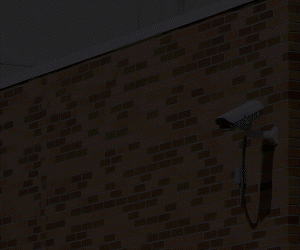Since first trying to retool the district’s existing content filter six years ago, Short has been able to invest in technologies built for the purpose of monitoring student behavior online for self-harm — and it’s paid off, having saved multiple students’ lives.
Capture and Flag Troubling Student Behavior Online
While some monitoring technologies capture only what students are searching in a web browser, Lightspeed Systems’ Lightspeed Alert — the tool Encinitas Union School District is currently using — works like a keylogger, capturing everything students type. This allows the district to identify potentially harmful content in applications like Google Docs, which Short says students are using as a communication tool.
Students can share documents with their classmates and type messages to one another in that document, he explains. “They’re pretty good about deleting what they’ve written, but the technology captures everything.”
DISCOVER: Technology enables collaboration on K–12 student projects.
When the team gets an alert about something potentially harmful, it can look at a document and — even if students have deleted the messages — the version history and the Lightspeed Systems technology have a record of what was typed.
Identify False Positives and Escalate Concerns
The Student Risk Module, part of the iboss zero-trust secure access service edge platform, “proactively identifies risks related to student threats to self-harm, threats to harm others, threats to the school and academic integrity by using advanced data analysis and customizable keyword alerts,” says Richard Quinones, senior vice president public sector at iboss. The company’s platform works in conjunction with Gaggle Safety Management to identify false positives and flag alerts that need immediate attention.
“If the team classifies it as a questionable content search, the alert will be emailed to the school or district,” Quinones says. With the power of 24/7 oversight and human scrutiny, today’s technologies weed out false positives fairly accurately.
At Encinitas Union School District, the team has dealt with everything from the release of the “Suicide Squad” movie to student reports on the death of Vincent Van Gogh.
However, “if anyone has any doubt whatsoever, we escalate it,” Short says.
The first step at the district is to reach out to principals, and sometimes teachers, to find out if the students are researching something that has triggered an alert. “Teachers know their students,” Short says. “Getting that extra little bit of information can let you know if a child might need some help.”
A 2021 report from the U.S. Secret Service’s National Threat Assessment Center examined 67 averted school attack plots. Forty-seven percent of plotters researched prior attacks, security measures, other related topics or a combination of those things.
When it’s determined that a student needs assistance or an intervention, the district has a team of psychologists assigned to the school sites. “They’re ready and trained to respond to those types of things,” Short says. “I’m not — I just handle the technical side.”
That team then contacts the parents or guardians of the student to get them help.












